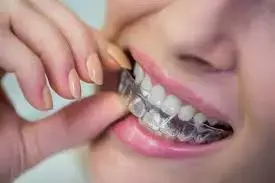- Home
- Medical news & Guidelines
- Anesthesiology
- Cardiology and CTVS
- Critical Care
- Dentistry
- Dermatology
- Diabetes and Endocrinology
- ENT
- Gastroenterology
- Medicine
- Nephrology
- Neurology
- Obstretics-Gynaecology
- Oncology
- Ophthalmology
- Orthopaedics
- Pediatrics-Neonatology
- Psychiatry
- Pulmonology
- Radiology
- Surgery
- Urology
- Laboratory Medicine
- Diet
- Nursing
- Paramedical
- Physiotherapy
- Health news
- Fact Check
- Bone Health Fact Check
- Brain Health Fact Check
- Cancer Related Fact Check
- Child Care Fact Check
- Dental and oral health fact check
- Diabetes and metabolic health fact check
- Diet and Nutrition Fact Check
- Eye and ENT Care Fact Check
- Fitness fact check
- Gut health fact check
- Heart health fact check
- Kidney health fact check
- Medical education fact check
- Men's health fact check
- Respiratory fact check
- Skin and hair care fact check
- Vaccine and Immunization fact check
- Women's health fact check
- AYUSH
- State News
- Andaman and Nicobar Islands
- Andhra Pradesh
- Arunachal Pradesh
- Assam
- Bihar
- Chandigarh
- Chattisgarh
- Dadra and Nagar Haveli
- Daman and Diu
- Delhi
- Goa
- Gujarat
- Haryana
- Himachal Pradesh
- Jammu & Kashmir
- Jharkhand
- Karnataka
- Kerala
- Ladakh
- Lakshadweep
- Madhya Pradesh
- Maharashtra
- Manipur
- Meghalaya
- Mizoram
- Nagaland
- Odisha
- Puducherry
- Punjab
- Rajasthan
- Sikkim
- Tamil Nadu
- Telangana
- Tripura
- Uttar Pradesh
- Uttrakhand
- West Bengal
- Medical Education
- Industry
How does orthodontic pain differ in patients using fixed appliances versus those using clear aligner therapies?

Researchers have found in a new study that the intensity of orthodontic pain in that fixed appliance versus those who use clear aligner therapies is the same in the initial 2 days of treatment. However, after two days those using clear aligners reported a low rate and intensity of pain whereas for those using fixed appliances pain peaked after 2 days touching baseline within a week.
The study results have been published in the American Journal of Orthodontics and Dentofacial Orthopedics.
This prospective study compared pain perception, intensity, and analgesic use among patients treated with fixed appliances (FAs) and clear aligners (CAs) over 6 months. Digital surveys were collected from 87 adult patients treated with CA or FA from 2 orthodontic offices.
The 7-item survey was sent at 3-time points (preappointment, 2-day postappointment, and 7-day postappointment) for each appointment. Wilcoxon, t test, and Fisher exact chi-square tests were performed with significance set at 0.05. Results: The FA group had a higher rate and intensity of pain 2 days after the second, third, and fifth appointments (P <0.030). At 7 days postappointment, the FA group had a higher rate and intensity of pain for the first and fifth appointments. Dull pain was reported the most in both groups, with a proportion of FA patients reporting throbbing (31%) or sharp (20%) pain (P = 0.035) at 2 days postappointment.
The CA group reported the most pain at rest, whereas the FA group reported chewing as the most painful (P = 0.002). The FA group had a higher rate of analgesic consumption after the first appointment (P = 0.037). Both the FA and CA groups experienced similar rates and intensities of pain 2 days after the delivery of appliances at the first appointment. Although CA pain intensity remained minimal, FA pain peaked 2 days postappointment whenever a new orthodontic stimulus was introduced and remained elevated 7 days postappointment when that stimulus was a new archwire material.
Reference:
Chan V, Shroff B, Kravitz ND, Carrico C, Hawkins D, Tran P, Lindauer S. Orthodontic pain with fixed appliances and clear aligners: A 6-month comparison. Am J Orthod Dentofacial Orthop. 2024 Jul 30:S0889-5406(24)00271-3. doi: 10.1016/j.ajodo.2024.07.002. Epub ahead of print. PMID: 39078353.
Dr. Shravani Dali has completed her BDS from Pravara institute of medical sciences, loni. Following which she extensively worked in the healthcare sector for 2+ years. She has been actively involved in writing blogs in field of health and wellness. Currently she is pursuing her Masters of public health-health administration from Tata institute of social sciences. She can be contacted at editorial@medicaldialogues.in.
Dr Kamal Kant Kohli-MBBS, DTCD- a chest specialist with more than 30 years of practice and a flair for writing clinical articles, Dr Kamal Kant Kohli joined Medical Dialogues as a Chief Editor of Medical News. Besides writing articles, as an editor, he proofreads and verifies all the medical content published on Medical Dialogues including those coming from journals, studies,medical conferences,guidelines etc. Email: drkohli@medicaldialogues.in. Contact no. 011-43720751


